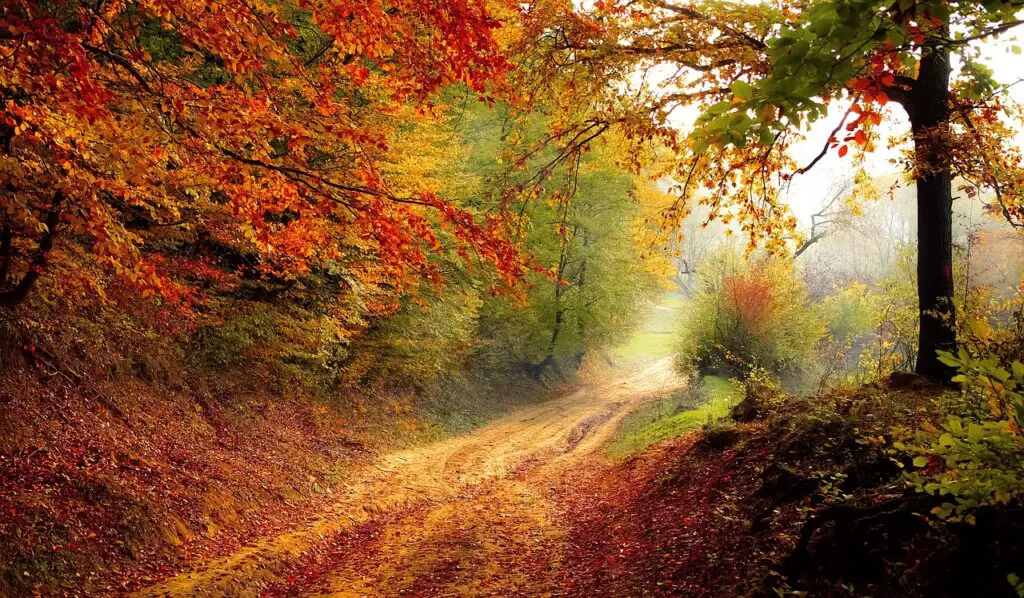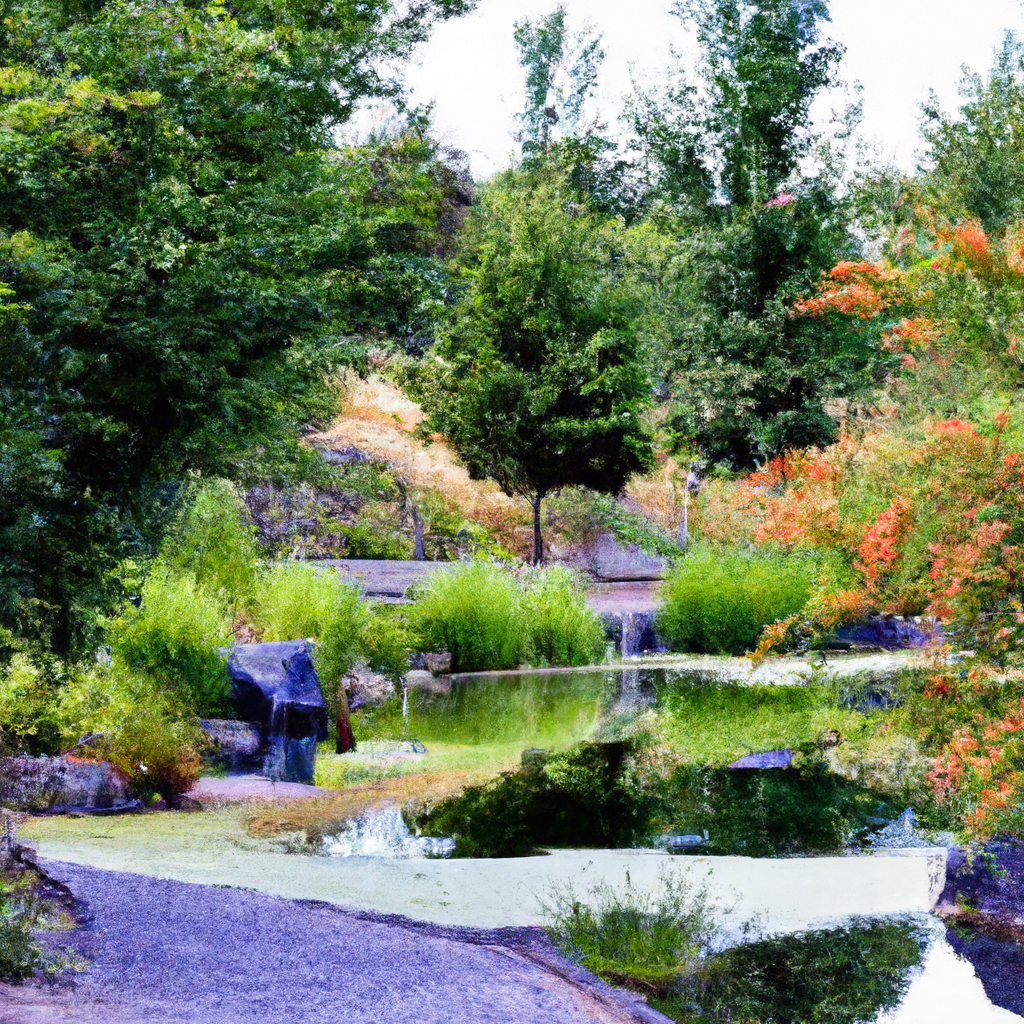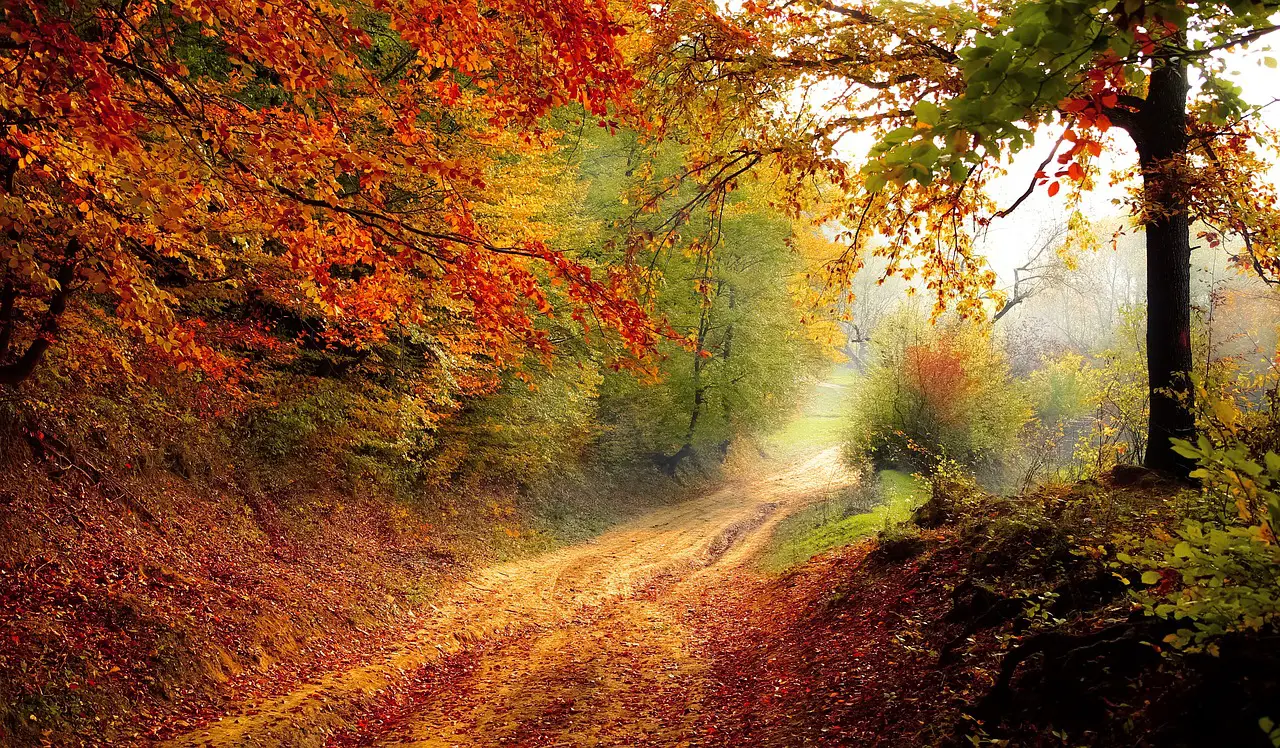Are you tired of being cooped up indoors? Ready for a breath of fresh air and a change of scenery? Look no further! In this article, we invite you to accompany us on a journey of discovery as we explore the many hidden gems nestled in your local parks and free recreational spaces. From sprawling green fields to tranquil nature trails, these often overlooked areas hold a wealth of opportunity for outdoor fun and relaxation. Get ready to uncover new favourites, reconnect with nature, and embrace the joy of exploring these vibrant and rejuvenating spaces. So, grab your walking shoes and a sense of adventure – let’s embark on this exciting expedition together!

1. Benefits of Exploring Local Parks and Free Recreational Spaces
Local parks and free recreational spaces offer numerous benefits that can enhance both your physical and mental well-being, while also fostering a connection with nature and the community. Let’s delve into the various advantages of exploring these hidden gems in your area.
1.1 Physical and Mental Health Benefits
When you spend time in local parks and free recreational spaces, you have the opportunity to engage in physical activities that promote overall fitness and well-being. Whether it’s jogging along scenic trails, cycling through lush greenery, or practicing yoga in serene surroundings, these outdoor spaces provide the perfect backdrop for exercise.
In addition, being in nature has been proven to have positive effects on mental health. Being surrounded by the beauty of trees, flowers, and fresh air can reduce stress levels, improve mood, and increase feelings of happiness and relaxation. Taking a break from the hustle and bustle of everyday life and immersing yourself in the tranquility of nature has a rejuvenating effect that can improve your overall quality of life.
1.2 Environmental Education and Awareness
Exploring local parks and free recreational spaces offers a unique opportunity for environmental education and awareness. Many parks have informative signage that educates visitors about the local flora and fauna, as well as the importance of conservation. By learning about the natural resources in your area, you gain a deeper understanding of the interconnectedness of the environment and the role we play in preserving it.
Furthermore, local parks often host workshops and events focused on environmental topics, such as bird watching, gardening, or wildlife preservation. Participating in these activities can expand your knowledge and make you feel more connected to the natural world around you. By becoming more environmentally conscious, you can make informed choices that contribute to a greener and more sustainable future.
1.3 Connection with Nature and the Community
In today’s fast-paced society, it’s essential to carve out time for nature and community connections. Local parks and free recreational spaces provide the perfect setting to unwind, recharge, and establish a deeper connection with the natural world.
These spaces not only offer a chance to escape the concrete jungle but also provide opportunities to socialize and connect with like-minded individuals. Whether you join a community gardening club, attend a guided nature walk, or simply strike up conversations with fellow park-goers, local parks can serve as a meeting ground for building new friendships.
Moreover, local parks often host community events such as concerts, festivals, and art exhibitions, bringing people together and creating a sense of belonging. By engaging with your community in these spaces, you not only foster a stronger social fabric but also develop a sense of pride in your local area.
2. Finding Hidden Gems in Your Local Area
Discovering the hidden gems in your local area can be an exciting and rewarding adventure. Here are some strategies to help you uncover the best local parks and free recreational spaces.
2.1 Researching and Mapping Local Parks
Start by conducting thorough research on the parks and recreational spaces in your area. Take advantage of online resources, such as government websites or apps dedicated to local parks, which provide valuable information such as location, facilities, and hours of operation.
Once you have gathered a list of potential spots, create a map to visually represent their locations. This will help you plan your visits effectively and identify clusters of parks that you can explore in a single outing. Consider using platforms like Google Maps or outdoor recreation apps to mark and organize your discoveries.
2.2 Seeking Recommendations from Locals and Online Communities
Local knowledge is invaluable when it comes to uncovering hidden gems. Talk to your neighbors, friends, and colleagues to gather recommendations on their favorite local parks and free recreational spaces. By tapping into the wisdom of those who reside in your area, you can uncover lesser-known locations that may not be easily found through traditional research.
In addition to personal recommendations, join online communities or forums dedicated to outdoor activities and local explorations. These platforms provide a wealth of information and insights from individuals who share a passion for discovering the best that their area has to offer. Engaging with these communities can lead to valuable recommendations and even potential new friendships with fellow adventurers.
2.3 Exploring Off-the-Beaten-Path Locations
While popular parks often receive a lot of attention, don’t overlook the hidden gems that lie off the beaten path. Take the time to venture beyond the well-known areas and explore the less crowded and lesser-known parks and recreational spaces in your area.
Consult maps, trail guides, or park brochures to identify quieter spots that may offer unique landscapes or activities. These hidden corners of your local area can often surprise you with picturesque scenery, undiscovered trails, or hidden lakes. Embrace the spirit of adventure and be open to exploring off-the-beaten-path locations for a truly unique and memorable experience.

3. Exploring Different Types of Local Parks and Recreation Areas
Local parks and recreational spaces come in various forms, each offering a distinct experience. Here are some common types of parks and recreation areas to consider exploring in your local area.
3.1 Urban Parks and Gardens
Urban parks and gardens provide a green oasis in the midst of bustling cities. Offering vibrant flower beds, manicured lawns, and shaded paths, these parks provide a serene escape from the urban chaos. Urban parks often feature playgrounds, picnic areas, and recreational facilities, making them a perfect spot for a family outing or a leisurely stroll.
Don’t forget to explore community gardens within urban parks. These spaces allow residents to grow their own fruits, vegetables, and flowers, fostering a sense of community and promoting sustainable living.
3.2 Nature Reserves and Wildlife Sanctuaries
Nature reserves and wildlife sanctuaries are ideal for nature enthusiasts who wish to observe local flora, fauna, and wildlife up close. These protected areas often feature well-maintained trails that wind through diverse ecosystems, such as wetlands, forests, or meadows. Bring your binoculars and camera to spot birds, butterflies, and other fascinating wildlife species.
While some nature reserves may require permits or guided tours, others offer self-guided exploration. Check the regulations and rules of each reserve before your visit to ensure a safe and enjoyable experience.
3.3 Sports and Activity Fields
For those looking to engage in recreational activities or team sports, local sports and activity fields are excellent options. These fields are equipped with facilities for popular sports such as soccer, baseball, basketball, or tennis. Organize a game with friends or join local leagues to enhance your skills and meet other sports enthusiasts.
Public sports fields often have designated areas for outdoor exercise and fitness activities, providing the perfect opportunity for those seeking a challenging workout or a fun group exercise class.
3.4 Waterfront and Coastal Parks
If you live near a coastline, waterfront parks and coastal areas offer a unique recreational experience. You can spend your day swimming, picnicking on the beach, or simply relaxing by the water’s edge. Many coastal parks feature walking or cycling paths that provide stunning views of the ocean and can be enjoyed all year round.
Some waterfront parks also offer facilities for water sports such as kayaking, paddleboarding, or fishing. Whether you prefer to be on the water or simply admire it from the shore, exploring waterfront and coastal parks is a wonderful way to connect with nature’s vast beauty.
3.5 Historical Parks and Heritage Sites
Immerse yourself in local history and culture by visiting historical parks and heritage sites. These parks often feature preserved buildings, monuments, or landmarks of historical significance. Take a guided tour or utilize audio guides to learn about the rich heritage and stories associated with these sites.
Engage with local history enthusiasts and park staff to gain a deeper understanding of the cultural importance of these locations. Exploring historical parks not only educates, but also showcases the traditions and heritage of your local community.

4. Making the Most of Your Visit: Tips and Activities
To fully enjoy your visit to local parks and free recreational spaces, here are some tips and activities to consider.
4.1 Planning Your Visit and Checking Park Information
Before setting off, check the park’s official website or call their visitor center to ensure they are open and to gather any important information. Some parks may have certain areas temporarily closed for maintenance or events. Familiarize yourself with park rules and regulations, such as leash laws for pets or restrictions on certain activities.
Plan your visit based on the time of year and weather conditions to optimize your experience. Consider peak seasons and weekends when parks may be more crowded, and choose quieter times for a more tranquil experience.
4.2 Engaging in Recreational Activities
Your visit to local parks and recreational spaces presents an opportunity to engage in various outdoor activities. Whether it’s hiking, biking, jogging, or playing sports, choose activities that align with your interests and fitness level. Consider exploring different paths, trails, or sports fields during each visit to keep your experiences fresh and exciting.
Additionally, some parks offer equipment rentals, such as bicycles, kayaks, or fishing gear. Take advantage of these rentals to try new activities without the need for purchasing specialized equipment.
4.3 Picnicking and Relaxing in the Outdoors
One of the simplest and most enjoyable ways to make the most of your visit to local parks is by packing a picnic. Gather your favorite snacks, sandwiches, and beverages and enjoy a leisurely meal surrounded by nature. Find a shaded spot or set up a blanket on a grassy area to unwind and soak in the peacefulness of your surroundings.
Beyond picnicking, local parks often have designated areas where you can relax or read a book. Bring a comfortable chair, hammock, or mat to fully immerse yourself in the calm ambiance of the outdoors.
4.4 Participating in Guided Tours and Programs
To further enrich your experience, consider participating in guided tours and programs offered by local parks. These tours are typically led by knowledgeable park staff or volunteers who can provide insights into the park’s history, ecology, or wildlife.
Guided tours may include birdwatching expeditions, nature walks, or informative talks about the park’s cultural heritage. Check the park’s official website or visitor center for upcoming events and programs that align with your interests.
4.5 Capturing Memories Through Photography
Local parks and free recreational spaces provide countless opportunities for capturing beautiful photographs. Remember to bring your camera or smartphone and let your creativity flow as you explore the scenic landscapes, unique wildlife, and interesting architectural features.
Experiment with different photography techniques such as capturing close-up shots of flowers, utilizing panoramic views, or focusing on intricate patterns in nature. Take your time and allow yourself to be present in the moment, photographing the beauty that surrounds you and creating lasting memories of your visits.

5. Supporting Local Parks and Recreational Spaces
Local parks and free recreational spaces rely on community support to thrive and continue providing valuable resources to the public. Here are some ways in which you can contribute to their preservation.
5.1 Volunteer Opportunities and Community Involvement
Many local parks offer volunteer programs that allow individuals or groups to actively contribute to the maintenance and improvement of the facilities. From trail cleanups and invasive species removal to planting trees and organizing events, there are numerous ways to get involved.
By dedicating your time and skills to these volunteer programs, you not only help enhance the park’s overall quality but also foster a sense of pride and ownership within the community. It’s a chance to connect with like-minded individuals, make a positive impact, and create lasting memories.
5.2 Donations and Sponsorship
If you are unable to donate your time, consider supporting local parks and recreational spaces financially. Many parks have associations or foundations that rely on donations to fund ongoing maintenance, conservation efforts, and special projects. Even small contributions can make a significant difference and ensure that these spaces remain accessible and well-maintained for future generations.
Additionally, seek sponsorship opportunities for specific projects or events within the park. Local businesses and organizations often welcome the chance to support community initiatives that align with their values. By connecting parks with potential sponsors, you can help secure additional resources to enhance the park experience for all.
5.3 Advocacy for the Preservation of Parks
Act as an advocate for the preservation of local parks and free recreational spaces. Stay informed about potential threats or changes to park regulations and voice your concerns to local authorities or elected officials. Join local conservation groups or park advisory committees to have a direct impact on decision-making processes.
By advocating for the preservation of parks, you play a crucial role in ensuring that these treasured spaces remain protected, accessible, and enjoyed by future generations.
5.4 Spreading the Word and Encouraging Others to Visit
Finally, one of the simplest ways to support local parks and recreational spaces is by spreading the word and encouraging others to visit. Share your positive experiences on social media, write reviews, or create blog posts highlighting the unique features and activities available in your local area.
By inspiring others to explore these hidden gems, you not only promote the value of local parks but also increase awareness and appreciation for the natural beauty that surrounds us. Encourage your friends, family, colleagues, and neighbors to explore these spaces and discover the incredible benefits they offer.
In conclusion, exploring local parks and free recreational spaces is an enriching and rewarding endeavor. From the physical and mental health benefits to the enjoyment of nature and connection with the community, these hidden gems contribute significantly to our well-being and the preservation of our natural environment. So, lace up your shoes, grab a picnic basket, and embark on an adventure to uncover the wonders that await in your local area. Happy exploring!


